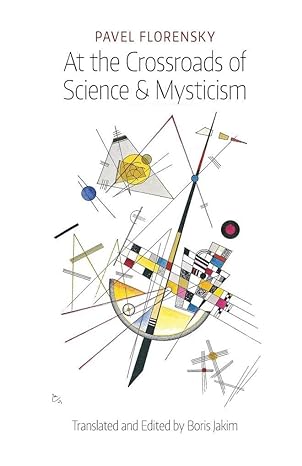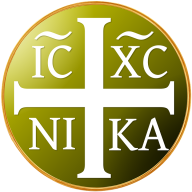Pavel Florensky (Boris Jakim, trans. and ed.)

It seems eminently appropriate to publish this review on the 86th anniversary of Father Pavel Florensky’s execution by firing squad in Soviet Russia. May his memory be eternal.
In the interest of full disclosure, it’s somewhat embarrassing to admit that, while I have known of At the Watersheds for ten years, and while the condensed English version At the Crossroads appeared in 2014, the latter came to my attention only last week…and only (of all things) because Amazon recommended it as possibly relevant to other books I’ve purchased. If only Amazon had thought of this years ago! My reason for reviewing a book that’s nine years old is to introduce my readers to as much of Florensky’s thought as possible.
As my generalist readers around the planet and Florensky scholars everywhere are well aware, the chef d’œuvre for which Father Florensky is universally known is his monumental The Pillar and Ground of the Truth (hereinafter PGT), published in Moscow in 1914 and translated into English by Boris Jakim for publication in 1997. Subtitled An Essay in Orthodox Theodicy in Twelve Letters, Florensky conceived this weighty tome not so much in the usual sense of “theodicy,” i.e., the problem of God vis-à-vis evil and suffering, as in a more expansive sense of “justifying God”—and, by extension, the Orthodox faith—to the mind of the modern skeptic typical of the Russian intelligentsia at the turn, and during the opening decades, of the last century. Each of his twelve “letters” addresses a topic of widespread interest to Russia’s educated classes, among them the Trinity, the antinomical character of Orthodox theology, universal salvation, sophiology, and male homosexuality.
Of a piece with Florensky’s theodicy was to have been his anthropodicy—his “justification of man”—intended to be published as the aforementioned At the Watersheds of Thought: The Elements of a Concrete Metaphysics. He began making notes at the age of 26, in 1908, and writing nine years later. He never finished it. The extent of what he had completed was finally published in 1999 in Moscow, 62 years after his death. (Note that, if looking for references to this work in the indices of other English-language studies of Florensky, the title has also been translated as On the Watersheds of Thought.)
The present brief volume (155 pages, inclusive of two appendices and an index) consists of seventeen short lectures delivered at the Petrov Monastery from August to November/December 1921, a time when Florensky attended his employment at the State Planning Commission for the Electrification of the Soviet Union in his cassock and pectoral cross. Jakim selected these as “represent[ing] the most substantial theological contribution in Watersheds” (p. 1).
In Crossroads we discern a complementary shift from PGT. Whereas PGT comprises a kind of theologico-dogmatic handbook (very loosely defined) which focuses on a number of the concerns of modernity, just from the titles of his lectures (some are untitled) we see that Crossroads addresses a dizzying range of human thought and experience. A few of the more salient lecture titles and partial titles are as follows:
- The Contemporary and the Ecclesial World-Understanding (p. 8)
- The Splitting of Being into Space and Time (p. 27)
- The Identity of Extreme Spiritualism and Materialism (p. 38)
- Occult Sciences (p. 54)
- Stigmatization (p. 62)
- Archimandrite Fyodor Bukharev (p. 109)
I mention this last in order to draw attention to Bukharev’s seminal role as perhaps the father of the current in modern Orthodox theology that came to be called “the Russian school” and “Russian religious philosophy,” represented most famously by Florensky and Father Sergei Bulgakov—and excoriated most famously by Father Georges Florovsky in his “back to the Fathers” project. Eulogized most recently by Elisabeth Behr-Sigel (Discerning the Signs of the Times, ch. 6, “A Monk in the City,” pp. 55-79) and Paul Valliere (Modern Russian Theology, part 1, “Bukharev: Orthodoxy and the Modern World,” pp. 19-106), Bukharev achieved notoriety during his lifetime not only for his unprecendented approach to engaging theologically with the modern world, but for leaving monasticism and the priesthood in order to marry. His place in Crossroads consists, not of a lecture about him (Jakim notes that [“t]his lecture is missing in Florensky’s notebook” p. 109), but of a single paragraph found in Florensky’s notes. In writing of this ecclesiastical and social pariah—who died, incidentally, 11 years before Florensky’s birth—Florensky foregrounds his own insistence on law-as-spirit over law-as-letter:
In the Lamb of God [Bukharev] saw the whole fullness of the noumenal foundations of the world. […] Outside of Christ life is impossible, not juridically, but ontologically. In Christ is freedom. […] By leaving the priesthood, [Bukharev] wished to redeem, as it were, society from the sin of not understanding the laws of Jesus Christ. By his suffering [Bukharev] wished to participate in Christ’a passion. (p. 109)
The reader will find much to disagree with in the present volume. This is natural. I offer two examples that stand out for me. First, as we’ve already seen in Letter 1 of PGT, Florensky can be harshly critical of non-Orthodox Christian traditions in ways to make one cringe in our modern ecumenical climate. In At the Crossroads, he fires his opening shot in Lecture One: “The removal of its historical husk leads to Christianity’s destruction, as in the case of Protestantism” (p. 5). Another notable instance comes in Lecture Seven: “…treatment by psychoanalysis is, in relation to Confession, the same thing as the black mass in relation to the Eucharist” (p. 58-59). Even here, though, we must be cautious in our disagreement. On Protestantism qua the destruction of Christianity, might not Florensky be equally harsh in his judgment of Russia’s 21st-century weaponized political “Orthodoxy” as manifested in the Patriarch’s full support of the invasion of Ukraine? Regarding the second matter, Florensky wrote at a time when Freudian psychoanalysis comprised (as far as I know) the only treatment, or one of the only ones, for mental illness. Psychology and psychotherapy are continuously evolving disciplines. Freudian psychoanalytic theory and psychoanalysis have fallen almost entirely out of favour in the psychological profession. Would Florensky hold the same view toward all forms of 21st-century mental health care?
The importance of At the Crossroads resides not in our finding agreement with Florensky in all things, but in our learning from his spirit of doing Orthodox theology in a dialectical relationship with the entirety of human experience. He hesitates neither to criticize where he deems necessary nor to acknowledge the good and the true wherever he finds it. According to Jakim, “Florensky tries to show that science…is compatible with Christian theology and mysticism. He sees the new epoch…of the fusion of science and mystical faith…[which] will touch on every aspect of life and every discipline of knowledge. A revived Christianity will emerge that will find its experiential validation both in mysticism and in scientific inquiry. A new earth will arise” (p. 2).
At the Crossroads can be purchased from Amazon. It’s always in stock because printed on demand.
Giacomo Sanfilippo is a PhD candidate at Trinity College in the University of Toronto, writing a thesis on Father Pavel Florensky’s theology of same-sex love. He holds an MA First Class in Theology from St. Michael’s College/Regis College (2015) and an Honours BA in Sexuality Studies from York University (2013). He also completed the MDiv (minus the thesis) at St. Vladimir’s Orthodox Theological Seminary (1989). He is an Orthodox Christian, father of five, and grandfather of three. He makes his home in Toronto, Canada.

